Why You’ll Love This Recipe
-
Quick and Easy: Ready in under 30 minutes, making it ideal for hectic schedules.
-
Flavorful: The sesame and garlic sauce adds a rich, umami taste that complements the salmon perfectly.
-
Healthy: Packed with omega-3 fatty acids and protein, this dish supports a balanced diet.
-
Versatile: Pairs well with various sides like steamed rice, salads, or roasted vegetables.

Ingredients
(Tip: You'll find the full list of ingredients and measurements in the recipe card below.)
-
Avocado oil
-
Salmon fillets
-
Coconut aminos or soy sauce
-
Rice vinegar
-
Garlic
-
Toasted sesame oil
-
Sea salt
Directions
-
Prepare the Salmon: Cut the salmon into bite-sized chunks.
-
Cook the Salmon: Heat avocado oil in a skillet over medium-high heat. Add the salmon pieces and cook until crispy and cooked through. Remove from the skillet and set aside.
-
Make the Sauce: In the same skillet, sauté minced garlic until fragrant. Add coconut aminos (or soy sauce), rice vinegar, and toasted sesame oil. Simmer briefly.
-
Combine: Return the salmon to the skillet, tossing to coat in the sauce. Season with sea salt to taste.
-
Serve: Enjoy warm, paired with your choice of sides such as steamed rice or vegetables.
Servings and Timing
-
Servings: This recipe yields approximately 3 servings.
-
Preparation Time: 5 minutes
-
Cooking Time: 20 minutes
-
Total Time: 25 minutes
Variations
-
Spicy Kick: Add a teaspoon of sriracha or red pepper flakes to the sauce for some heat.
-
Sweet Touch: Incorporate a tablespoon of honey or maple syrup into the sauce for a hint of sweetness.
-
Crunchy Texture: Before cooking, coat the salmon pieces in cornstarch or arrowroot powder to enhance crispiness.
Storage/Reheating
-
Storage: Place any leftovers in an airtight container and refrigerate for up to 2 days.
-
Reheating: To maintain the salmon's texture, reheat gently in a skillet over low heat until warmed through. Avoid using the microwave, as it may soften the crispy exterior.
FAQs
How can I ensure the salmon stays crispy?
To achieve a crispy texture, ensure the skillet and oil are adequately heated before adding the salmon. Cooking the salmon undisturbed for a few minutes on each side also helps develop a crisp exterior.
Can I use frozen salmon for this recipe?
Yes, but ensure the salmon is fully thawed and patted dry to remove excess moisture before cooking to achieve the desired crispiness.
What can I substitute for avocado oil?
Olive oil or any neutral cooking oil with a high smoke point can be used as a substitute for avocado oil.
Is there a difference between coconut aminos and soy sauce?
Coconut aminos are a soy-free alternative to soy sauce, offering a slightly sweeter and less salty flavor. Adjust seasoning accordingly if substituting.
How do I prevent the garlic from burning?
Sauté the garlic over medium heat and stir continuously. Adding the sauce ingredients shortly after the garlic becomes fragrant can prevent it from burning.
Can I bake the salmon instead of pan-frying?
Yes, baking is an option. Place the salmon pieces on a lined baking sheet and bake at 400°F (200°C) for about 10-12 minutes, or until cooked through. However, pan-frying yields a crispier texture.
What sides pair well with this dish?
Steamed jasmine rice, quinoa, sautéed greens, or a fresh cucumber salad complement the flavors of this salmon dish.
Can I prepare the sauce in advance?
Absolutely. The sauce can be made ahead and stored in the refrigerator for up to a week. Reheat gently before tossing with the cooked salmon.
How do I know when the salmon is cooked through?
Salmon is done when it flakes easily with a fork and appears opaque throughout. Overcooking can dry out the fish, so monitor closely.
Is this recipe suitable for meal prep?
Yes, but for optimal texture, store the sauce and cooked salmon separately, combining them just before reheating and serving.

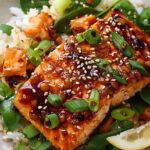
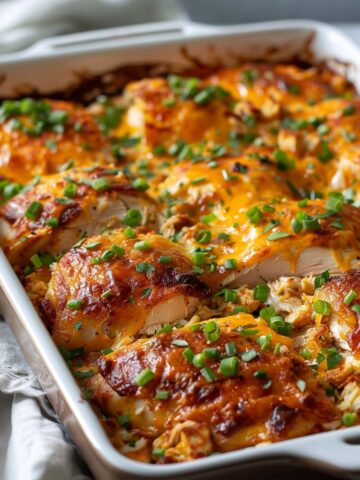
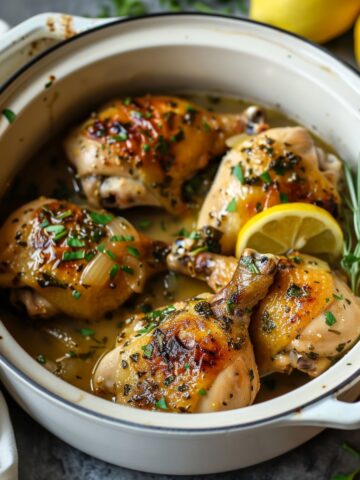
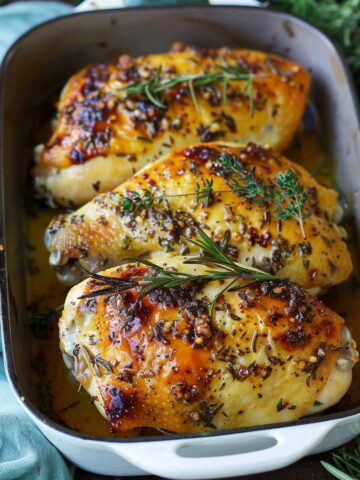
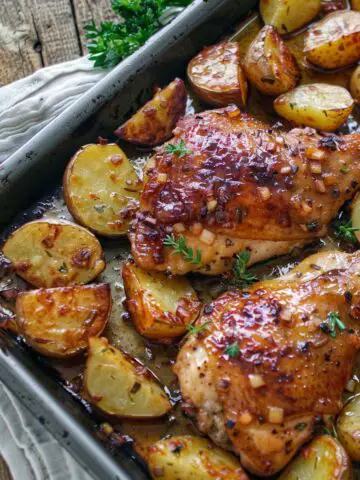
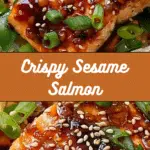
Leave a Reply